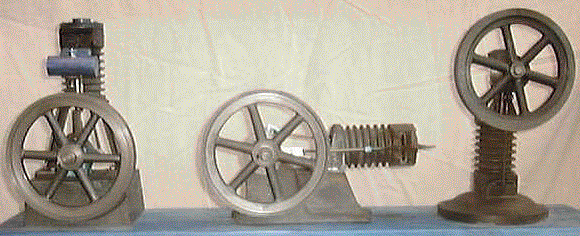
These engines are variously called vacuum, flame-licker or flame-gulper engines and work by drawing hot gasses or a flame into a cylinder to be cooled. Admission of the hot flame into the cylinder is controlled by a valve. There is a power stroke every revolution. On the outward stroke of the piston, the valve is open, and the flame is so drawn in to the cylinder. Just before the top of the stroke the valve is closed and the resulting drop in pressure draws back the piston, for the power stroke. One problem to be found running these engines is that of back-pressure at the end of the power stroke. The valve needs to be so constructed that it can lift and release any back-pressure.There have been a number of small power engines built, notably in Britain, but the vast amount of vacuum engines sold commercially have been as toys or models.
Alyn Foundry
Supply castings for three sizes of vacuum engine
For details of casting kits available email acme@random60.freeserve.co.uk
Or goto http://www.alynfndy.freeserve.co.uk/main.htm

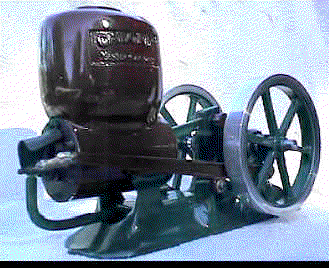 Harley Rackley
Supplies castings for an interesting model flamesucker or vacuum engine.
Harley Rackley
Supplies castings for an interesting model flamesucker or vacuum engine.This model flame sucker or vacuum engine is 7 inches high by 12 in length. The cylinder is 1 3/8 inch bore by 2 1/2 inch stroke with a graphite piston and valve. The flywheels are 5 inch diameter. This casting kit is supplied by
Harley Rackley For more information on price etc. go to http://www.caloric-engines.com/ |
|
Jerry Howell
Drawings for a model flame engine can be obtained from
Jerry E. Howell of
Colorado Springs, Colorado, USA.
E-mail - jerryhowell@nail.com or for further information goto http://www.jerry-howell.com |
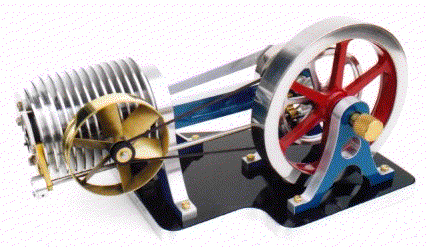
|
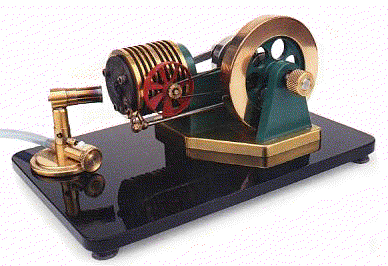
|
| This flame-licker engine was built by Roy Rice in the USA. |
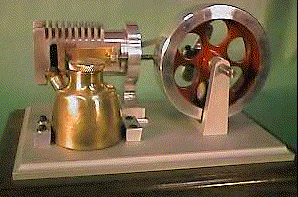 |
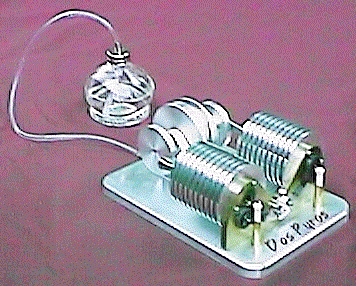 |
This twin cylinder engine was built by Richard Egge also from the USA. |
More information on these models can be found on Roy´s and Richard´s web pages. http://geocities.com/CapeCanaveral/Launchpad/5465/
